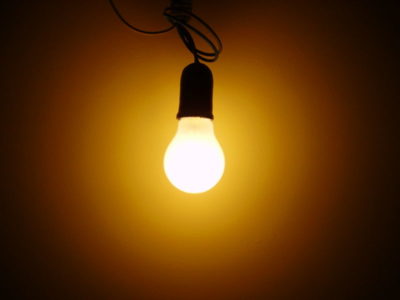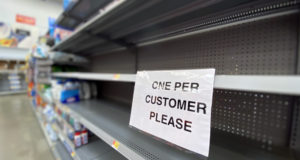 As the New Year begins, traditional light bulbs will be history.
As the New Year begins, traditional light bulbs will be history.
Light bulb manufacturers will stop making 40 and 60-watt incandescent light bulbs at the start of 2014, a year after the 75 and 100-watt varieties were also phased out.
It’s all because of a law signed by President George W. Bush in 2007 (the law was passed by the Democrat-controlled legislature) designed to eliminate the energy inefficiency caused by traditional light bulbs. According to the Environmental Protection Agency, only 10 percent of an incandescent bulb’s energy is converted to light, with the rest wasted as heat.
CNN reported that instead of incandescent bulbs, consumers will be able to choose from halogen, compact fluorescent, LED, and high efficiency incandescent bulbs. While all these are quite a bit more expensive than traditional bulbs, they save energy and money in the long-run, supporters note.
The new rules will likely irk consumers already facing high prices for consumer goods, as well as libertarians and Tea Party supporters who believe the government should not dictate what kinds of light bulbs people can buy. If the new ones are really better, they argue, people will make the change on their own.
Republicans tried to overturn the law, but when that didn’t work, they shifted to preventing the Department of Energy from spending money to enforce it. Still, the manufacturers say they do not plan to continue making traditional bulbs after the first of the year.
“We haven’t seen any problems with respect to compliance,” Kyle Pitsor, vice president for government relations at the National Electrical Manufacturers Association, which represents 95 percent of all US light bulb makers, told CNN.
He said most initial concerns by consumers faded away as they learned about the new bulbs.
Slash Your Lighting Bill By 90%…And Never Change A Light Bulb Again!
According to CNN, high efficiency incandescents cost $1.50 each, three times that of a normal incandescent bulb. But the high efficiency models last twice as long and use 28 percent less power.
On the other hand, a 40-watt LED bulb costs $7.50, but it uses 85 percent less energy than a traditional bulb – and lasts years or even decades. Mark Voykovik, national light bulb merchant for Home Depot, told CNN that an LED will consume roughly $2 worth of power during a year’s normal use, compared to over $7 for a traditional incandescent.
“In two years, you pay off that bulb,” he said, adding that an LED should last another 18 years after that — keeping the savings rolling.
In addition, CNN reported, LED’s avoid some of the issues that turn people off to compact fluorescent bulbs; LEDs don’t contain mercury, they turn on instantly, and they give off warm light similar to incandescents.
As consumers figure out which bulbs they will be switching to in 2014, here’s the scoop on the three primary options for screw-mount light fixtures, courtesy of PC Mag:
- Halogen bulbs: Similar to incandescent bulbs, they are the cheapest of all non-incandescent bulbs at only $1.25 per bulb. But they only last about 1,000 hours and use two-thirds as much energy as a traditional incandescent.
- Compact Fluorescent (CFL) bulbs: These bulbs offer the best combination of economy and efficiency, costing about $2, lasting up to 10,000 hours and consuming less than a fourth of the energy of an incandescent bulb. But the light is much “cooler” than incandescent or halogen light, making it look more blue than white to people used to incandescent bulbs. They can also be a pain to dispose of, since they contain trace amounts of mercury, which must be recycled at a proper facility.
- LED bulbs: These are the most expensive bulbs on the market, but they last up to 25,000 hours and only use a sixth of the energy an incandescent bulb uses. In addition, they can have adjustable colors, and they don’t contain any toxic chemicals requiring special disposal.
Sign up for Off The Grid News’ weekly email and stay informed about the issues important to you
 Off The Grid News Better Ideas For Off The Grid Living
Off The Grid News Better Ideas For Off The Grid Living



